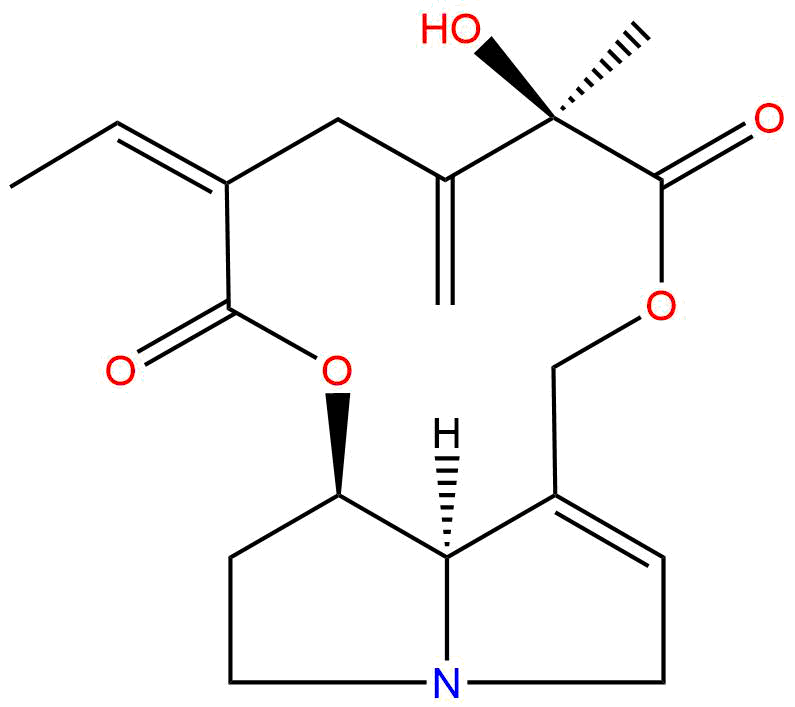
SeneciphyllineCAS No.:480-81-9
|
||||||||||
 |
|
|
||||||||

| Catalogue No.: | BP2025 |
| Formula: | C18H23NO5 |
| Mol Weight: | 333.384 |
Product name: Seneciphylline
Synonym name:
Catalogue No.: BP2025
Cas No.: 480-81-9
Formula: C18H23NO5
Mol Weight: 333.384
Botanical Source:
Physical Description:
Type of Compound: Alkaloids
Purity: 95%~99%
Analysis Method: HPLC-DAD or/and HPLC-ELSD
Identification Method: Mass, NMR
Packing: Brown vial or HDPE plastic bottle
Storage: Store in a well closed container, protected from air and light. Put into refrigerate or freeze for long term storage.
The product could be supplied from milligrams to grams
Inquire for bulk scale.
For Reference Standard and R&D, Not for Human Use Directly.
Description:
Seneciphylline, one of the hepatotoxic pyrolizidine alkaloids, has mutagenic activity in Drosophila and their transfer into rat milk.Seneciphylline can significantly increased the activities of epoxide hydrase and glutathione-S-transferase but cause reduction of cytochrome P-450 and related monooxygenase activities.
References:
J Ethnopharmacol. 1984 Dec;12(3):271-8.
Effect of seneciphylline and senecionine on hepatic drug metabolizing enzymes in rats.
METHODS AND RESULTS:
The effect of oral administration of the pyrrolizidine alkaloids, Seneciphylline and senecionine, from Senecio vulgaris (Compositae) on activities of hepatic epoxide hydrase, glutathione-S-transferase, aminopyrine-N-demethylase and arylhydrocarbon hydroxylase (AHH) was investigated in microsomes of young male albino rats. Seneciphylline significantly increased the activities of epoxide hydrase and glutathione-S-transferase but caused reduction of cytochrome P-450 and related monooxygenase activities. Senecionine failed to stimulate epoxide hydrase while it diminished the activities of glutathione-S-transferase, aminopyrine demethylase and AHH.
CONCLUSIONS:
Seneciphylline and senecionine could not produce any prominent in vitro effect on the hepatic drug metabolizing enzymes under study, except slight stimulation of epoxide hydrase activity by both the alkaloids and slight reduction of aminopyrine demethylase activity by senecionine.
Experientia, 1977, 33(4):498-9.
Hypertrophy of pulmonary arteries and arterioles with cor pulmonale in rats induced by seneciphylline, a pyrrolizidine alkaloid.
METHODS AND RESULTS:
Seneciphylline, one of the hepatotoxic pyrolizidine alkaloids, induced, as do also monoclotaline, etc., a marked arterial and arteriolar hypertrophy of the lung of young Wistar rats a month after a single s. c. injection of 50–80 mg/kg. Cor pulmonale with leftward shift of the ventricular septum was also noted.
HPLC of Seneciphylline
